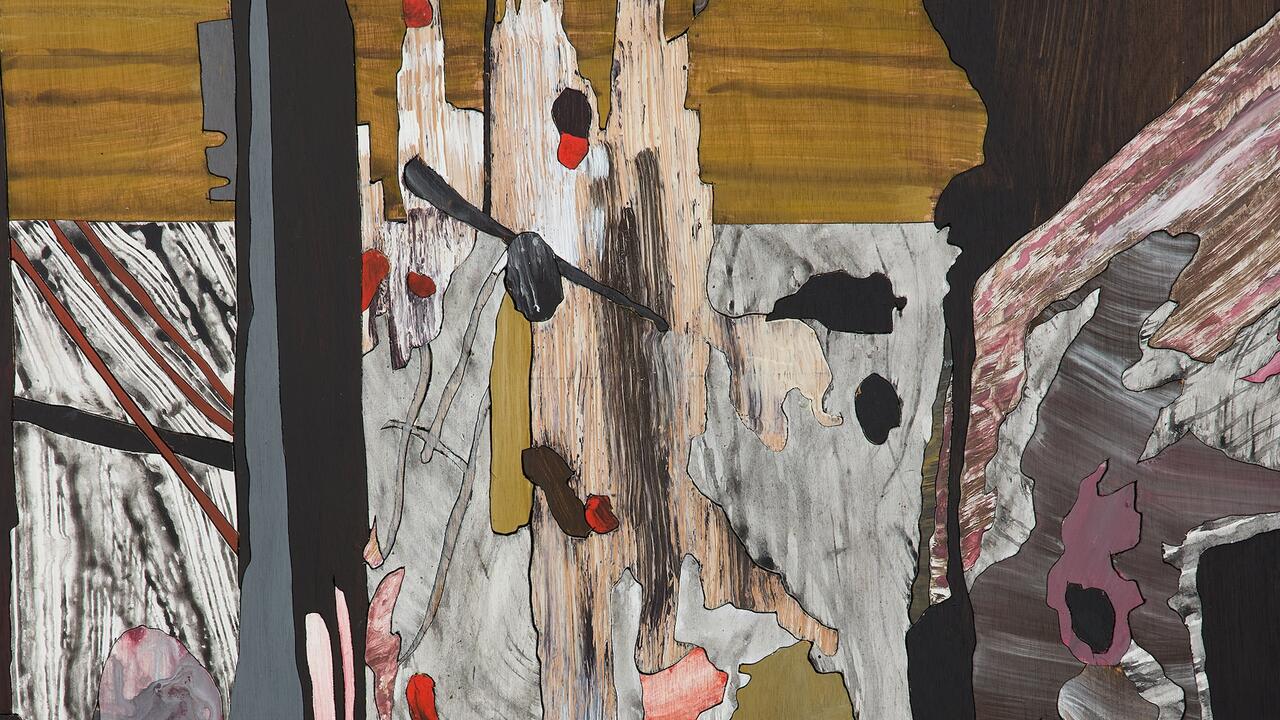Art & Language
Musee d'Art Moderne Lille Metropole, France
Musee d'Art Moderne Lille Metropole, France

My dad's approach to visiting big retrospectives is to work backwards, starting with the final room and making his way back to the juvenilia. He claims that other people rush through the last few galleries, which is where the best stuff's usually to be found, and that he hates the diligent crush in the opening rooms. I suspect he's got other reasons as well, to do with swimming against the tide and feeling uncomfortable with the neat temporal sequencing of something as tricky as art. After visiting Art & Language's 'Too Dark to Read: Motifs Retrospectifs 2002-1965', I realized he's not the only one resisting the traditional backward glance.
Even the most ardent art geeks are sometimes guilty of zipping through a show, making secret deals with themselves to read every word of the catalogue once they're back home and seated comfortably. Two billboards hung with scaled-down recreations of Art & Language's greatest hits, Homes from Homes 1 & 2 (2000-1), seemed to welcome this shaming impulse. On closer inspection, though, there's something terribly wrong with these fun-size simulacra - colours are off or completely changed, canvases have been tipped sideways. Travestying your own oeuvre may seem a risky gambit, but bad cover versions make a certain kind of sense in Art & Language's world. Mike Baldwin and Mel Ramsden aren't interested in pleasing results - they prefer to poke at art with pointy theoretical sticks, giggling at its involuntary twitches. Other recent works on show also revisit canonical pieces from the artists' past. Like Arthur Conan Doyle's elaborate resurrection of Sherlock Holmes in The Hound of the Baskervilles (1902), there's a slightly ludicrous edge to this process. Celebrated for probing the mysteries of Greenbergian Modernism, the conceptual detectives have begun to train their magnifying glasses on themselves.
Tinkling through End of the Century (1994), Blur observed 'Your mind gets dirty as you get closer to 30'. After 37 years Art & Language's work has become positively priapic. A smutty double of their seminal Index 01 (1972), Wrongs Healed in Official Hope (1998-9) is an impossible bureaucracy of porn, visited by Mrs Malaprop. Eight filing cabinets containing 350 texts indexed according to their logical and ideological (in)compatibility, Index 01 positioned critical inquiry into art practice as an art activity in itself. Wrongs Healed in Official Hope transforms these cabinets into honey-bearing beehives, their flanks pasted with corrupted passages torn from dirty magazines: 'there were nubiferous girls all around the tomb of value'; 'Dominique grew her wealth upon the girl'; 'somebody skim my pasta'. The way the porn survives its garbled translation is pretty funny, although it's hard to see how the newer work engages with the older, except in terms of bringing high culture low and shifting its emphasis from the rarefied mind to the vile body.
There's a similar preoccupation with sex and seeing in the 'Index: Now They Are' series (1992-3), a roomful of fleshy monochrome canvases, each obscuring the beaver-shot of Gustave Courbet's The Origin of the World (1866). Scrunching up our eyes to peek at the image beneath the matte pigment, we notice the word 'hello' spelt out in shiny pink letters. It's a nice joke on the French painter's Bonjour Monsieur Courbet (1854), linking his bushy black beard with the fulsome pubic tuft displayed in The Origin of the World. Like much of Art & Language's later work, it plunders the group's own legacy, referencing the lush black square of Secret Painting (1967-8), itself a inky merkin concealing an image known only to the artists. Appropriately these visual games are accompanied by a verbal puzzle: the Latin translation of 'Now They Are' is nunc sunt, a none too cryptic anagram of 'nun's cunt', an anatomical feature concealed from the world. The paintings ask a bunch of questions about the erotics of seeing, circling the implications of Jacques Lacan's secret ownership of Courbet's canvas, but none of them feels particularly new or vital. Like Wrongs Healed in Hope, they are perhaps best read as a sly counterpart to Picasso's late works, in which the all-conquering artist satirized his own back catalogue, making tits and ass art that muddied the waters of his reputation.
Perhaps this strategy shouldn't be so surprising. In 1968 Art & Language 'exhibited' a huge column of air over Oxfordshire. Of course, it's impossible to say whether it features in this retrospective, invisible things rarely being easy to spot. I've got a feeling it does though, and its wobbly phallic shape is finally making some kind of sense.























